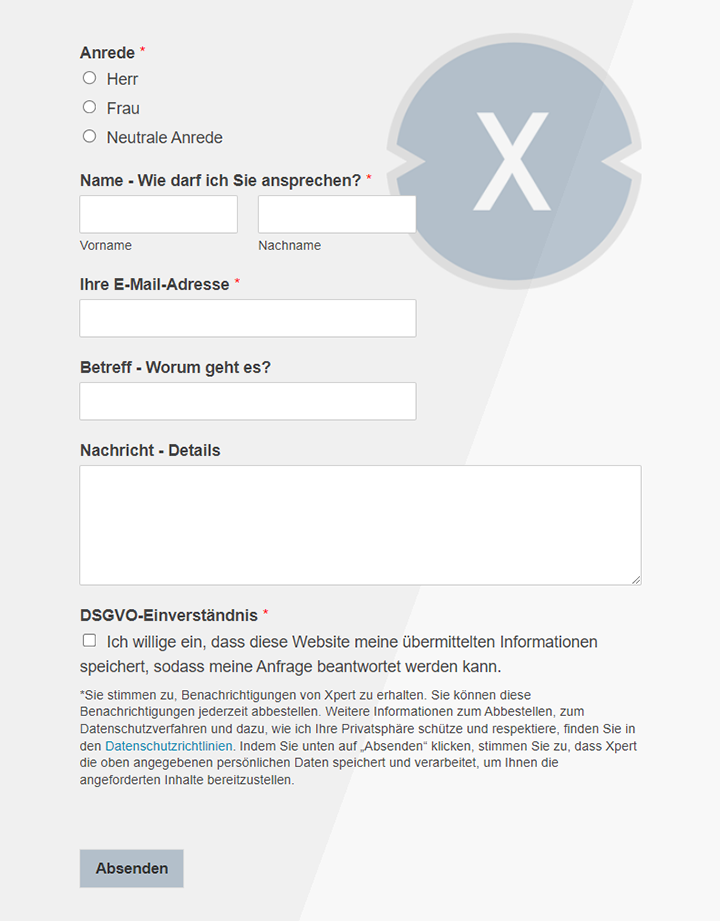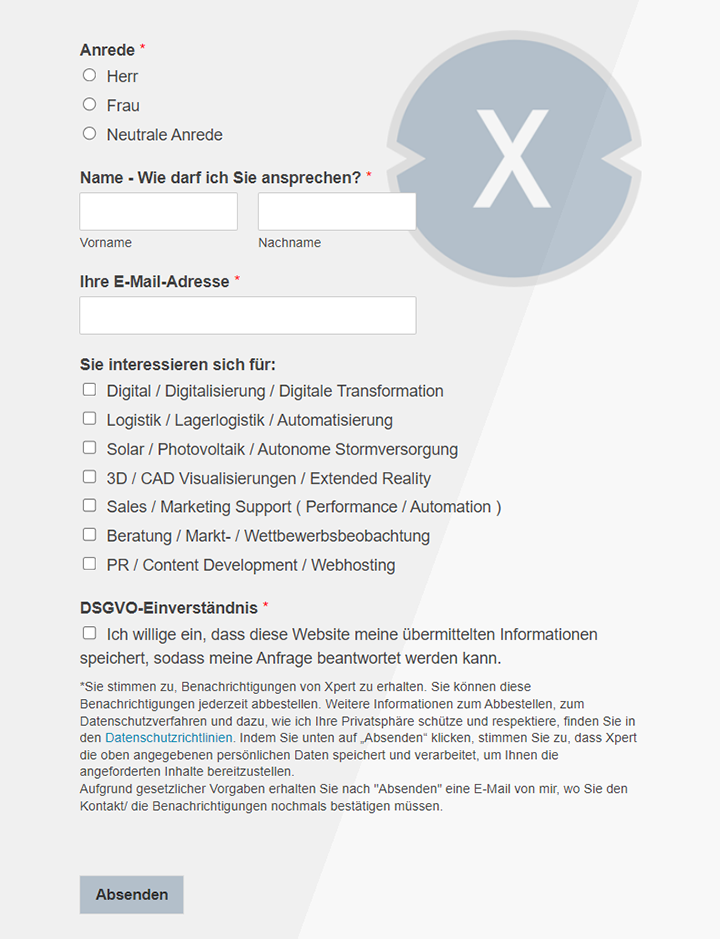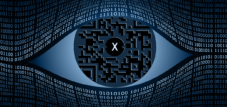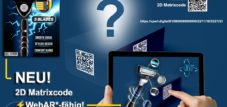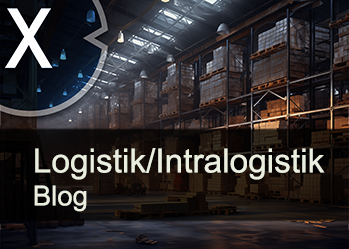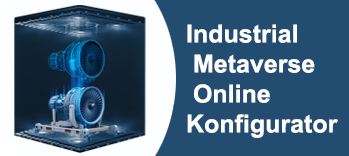Bild.de reports on the topic of 2D matrix code: 50 years of barcodes and the question of whether the barcode will soon no longer exist?
Xpert pre-release
Language selection 📢
Published on: January 6, 2025 / Update from: January 6, 2025 - Author: Konrad Wolfenstein

From barcode to GS1 DataMatrix Code – New information and data potential for companies and end consumers – Image: Xpert.Digital
The global distribution of the GS1 DataMatrix code: progress and challenges
The classic barcode, which has accompanied almost every product in Germany since the 1970s, is on the verge of being replaced. The Bild newspaper took up the topic and asked whether the bar code could soon be a thing of the past . Consumers are increasingly encountering QR codes and other two-dimensional codes on product packaging in supermarkets and discount stores. This development draws attention to a major innovation in product labeling: the GS1 DataMatrix Code.
Suitable for:
From the barcode to the QR code to the GS1 DataMatrix code
While the classic barcode (1D code) stores information in a single dimension, the two-dimensional QR code enables an intermediate step towards more modern technologies by being able to store significantly more data in a smaller space. A further development can be found in the GS1 DataMatrix Code, a specialized variant of the system that meets the international GS1 standards. These standards ensure consistent product labeling worldwide and play an important role in optimizing logistics processes, ensuring product safety and improving transparency in the supply chain.
The GS1 DataMatrix Code offers several key advantages over the traditional barcode:
- Information density: It can store extensive data such as batch numbers, expiry dates and origin information in a limited space.
- Robustness: The code remains readable even if it is damaged or dirty.
- Flexibility: The code can be scanned in any orientation.
- Sustainability: Space-saving labeling allows packaging to be optimized and material saved.
Suitable for:
Areas of application of the GS1 DataMatrix code
The possible applications of the GS1 DataMatrix code are diverse and extend far beyond retail:
- Retail: More accurate inventory management can reduce food waste.
- Healthcare: Patient safety is increased as medications and medical devices can be clearly identified.
- Logistics: Optimized supply chains and more efficient warehousing are the result.
- Technical industries: The protection against counterfeiting of components and components is improved.
Suitable for:
Benefits for companies and consumers
Benefits for companies
- Efficient logistics: The GS1 DataMatrix Code improves transparency and traceability in the supply chain. For example, you can quickly see where a product was manufactured and what route it took.
- Cost reduction: Automated processes save time and money by reducing manual entries.
- Fight against counterfeits: Counterfeits can be effectively combated through clear labeling, especially in the pharmaceutical and electronics industries.
Benefits for consumers
- More transparency: Consumers can access detailed product information such as ingredients, nutritional values and allergens via their smartphone.
- Product security: Clear identification of products increases the security of avoiding counterfeit or inferior goods.
- Interactive experiences: Codes can lead to recipes, competitions or other digital content, enriching the shopping experience.
Challenges and future prospects
The introduction of the GS1 DataMatrix code also brings challenges. This includes:
- Costs of switching: Companies must invest in new technologies and processes.
- Acceptance: Both companies and consumers need to get used to the new technology.
- Integration: Existing systems must be made compatible.
Nevertheless, numerous developments point to widespread distribution of the GS1 DataMatrix code by 2027. Some large retailers such as Kaufland and Lidl are already relying on two-dimensional codes, while others such as Aldi and Rewe are still monitoring the development.
Coexistence of technologies
It is likely that the classic barcode will continue to be used in certain areas. Its simplicity and cost-effectiveness continue to make it attractive in many applications. At the same time, new technologies such as image or AI-based systems could become more important in the future. These systems could identify products directly based on their visual characteristics, without the need for a barcode.
Artificial Intelligence and DataMatrix Codes
An exciting future aspect is the combination of DataMatrix codes with artificial intelligence (AI). AI can analyze large amounts of data and provide valuable insights into supply chains or consumer behavior. For example, companies could use AI to see how efficient their supply chains are or where bottlenecks occur.
The GS1 DataMatrix Code represents a significant advancement in the world of product labeling. Its advantages in terms of information density, robustness and flexibility make it a future-oriented technology. Both companies and consumers benefit from improved transparency, increased product safety and new digital interaction options.
However, the barcode will not disappear completely. Rather, there will be a coexistence of different technologies that complement each other depending on the application. In the meantime, the GS1 DataMatrix Code will increasingly become the norm and continue to drive the digitalization of commerce.
Looking ahead, it will be exciting to see how quickly and comprehensively this new technology will find its way into our everyday lives. One thing is certain: The GS1 DataMatrix Code is emblematic of the change that is shaping our modern economic system and our consumer behavior.
Our recommendation: 🌍 Limitless reach 🔗 Networked 🌐 Multilingual 💪 Strong sales: 💡 Authentic with strategy 🚀 Innovation meets 🧠 Intuition
At a time when a company's digital presence determines its success, the challenge is how to make this presence authentic, individual and far-reaching. Xpert.Digital offers an innovative solution that positions itself as an intersection between an industry hub, a blog and a brand ambassador. It combines the advantages of communication and sales channels in a single platform and enables publication in 18 different languages. The cooperation with partner portals and the possibility of publishing articles on Google News and a press distribution list with around 8,000 journalists and readers maximize the reach and visibility of the content. This represents an essential factor in external sales & marketing (SMarketing).
More about it here:
The revolution in data capture: More than just a battle between barcode and 2D matrix code
A look at the debate: barcode versus 2D codes
The question of whether the classic bar code, which has accompanied us at supermarket checkouts and in warehouses for decades, will soon become a thing of the past, is more than just a side note in the digital age. Media reports like the one on Bild.de, which address the 50th anniversary of the barcode and at the same time raise the question of its future, reflect a reality in which technological innovations challenge established systems. The growing presence of QR codes on products in discounters and supermarkets is a clear sign of this change for many consumers. But while the discussion is often reduced to the comparison between the familiar bar code and the omnipresent QR code, the real core of the development lies in the increasing importance of 2D matrix codes, especially the GS1 DataMatrix code.
GS1 DataMatrix Code: A key to digitalization
This two-dimensional barcode is much more than just a possible successor to the barcode. It is a key building block for digital transformation in numerous industries, from logistics to healthcare to retail. Its ability to store an immense amount of information in a small space makes it an indispensable tool in a world where data is becoming increasingly important. The advantages of the GS1 DataMatrix code over the conventional barcode are diverse and far-reaching.
Information density: data in the smallest space
A decisive advantage lies in its information density. While the one-dimensional barcode can only linearly encode a limited number of characters, the GS1 DataMatrix Code allows hundreds or even thousands of characters to be stored within a small square or rectangular area. This opens up completely new possibilities for product identification and tracking. Where the barcode is often limited to an item number, the GS1 DataMatrix Code can contain detailed information such as production dates, batch numbers, expiration dates, serial numbers and even links to web-based additional information.
Space Efficiency: Perfect for small products
Another key plus point is space efficiency. In a world where product packaging is becoming increasingly compact and label space is limited, the small size of the GS1 DataMatrix code plays a crucial role. It can be easily applied to the smallest products or difficult-to-label surfaces without compromising readability. This is particularly relevant in industries such as the pharmaceutical or electronics industries, where components are often very small and still need to be clearly identified.
Robustness: reliability in difficult conditions
The robustness of the GS1 DataMatrix code is another factor that makes it ideal for demanding areas of application. In contrast to the bar code, whose readability is quickly impaired by scratches, folds or dirt, the GS1 DataMatrix Code remains reliably readable even if it is damaged or partially covered. This is due to its sophisticated error correction that allows scanners to reconstruct missing or corrupted data. In logistics, where products are often exposed to harsh conditions, this property is invaluable.
Versatility: Efficiency through flexibility
The versatility of the GS1 DataMatrix code is another clear advantage. It can be scanned in any orientation, making handling and scanning much easier and faster. In contrast to the barcode, which must be precisely aligned, the scanner recognizes the GS1 DataMatrix code regardless of its position. This saves time and minimizes the risk of scanning errors, especially in high-throughput environments.
Industry revolution: Application areas of the GS1 DataMatrix Code
The areas of application of the GS1 DataMatrix code are diverse and reflect its adaptive properties. In retail, it is revolutionizing inventory management. The detailed information stored in the code allows goods movements to be tracked in real time, inventory levels to be optimized and bottlenecks to be avoided. In addition, it contributes to the reduction of food waste by enabling traceability down to the individual product and thus allows for more targeted disposal of expired goods. The ability to integrate dynamic information such as price changes or special offers into the code also opens up new possibilities for interactive sales concepts.
The importance of the GS1 DataMatrix code in healthcare
In healthcare, the GS1 DataMatrix Code plays a critical role in increasing patient safety. Clear labeling of medications and medical devices minimizes the risk of mix-ups. The code can contain information such as batch numbers, expiry dates and even individual patient information, ensuring complete traceability and safe use of medication. The ability to identify counterfeit medications is another important aspect that significantly increases patient safety.
Advantages of the GS1 DataMatrix code in logistics
In logistics, the GS1 DataMatrix Code optimizes the entire supply chain. From production to warehousing to transport, it enables efficient and transparent tracking of goods. Automated data capture reduces manual intervention and thus minimizes the risk of errors. The detailed information in the code allows precise control of the flow of goods, faster processing and improved planning. This leads to cost savings and greater efficiency throughout the logistics chain.
Application of the GS1 DataMatrix code in the technical industry
The GS1 DataMatrix Code is also becoming increasingly important in the technical industries. It enables anti-counterfeit protection and traceability of components, which is particularly important in industries such as the automotive or aviation industries. By clearly labeling components, manufacturers can better control the quality of their products and act quickly and efficiently in the event of recalls. The ability to store detailed production data in the code also enables improved analysis and optimization of production processes.
Different approaches to retail
While some retailers such as Kaufland and Lidl are already increasingly relying on QR codes, especially at service counters and for special items, other companies such as Rewe and Aldi are still closely monitoring the development without having concrete plans for a comprehensive change. These different approaches reflect the complex considerations involved in such a technological shift. The costs of implementing new scanner systems and adapting the existing infrastructure must be taken into account, as well as the need to get consumers used to the new codes.
Future plans of the GS1 organization
The US organization GS1, which is responsible for the global standardization of barcodes, is planning a major transition to two-dimensional codes, including the GS1 DataMatrix code, in 2027. This ambitious goal underlines the increasing acceptance and immense potential of this technology. It suggests that moving from one-dimensional to two-dimensional codes in the coming years will not only be an option, but rather a necessity for companies that want to remain competitive.
Benefits for consumers
For consumers, the GS1 DataMatrix Code opens up a new dimension of product information and transparency. By scanning the code with your smartphone, you can access detailed product information that goes far beyond the information on the packaging. Information on ingredients, nutritional values, allergens, origin, production methods and even sustainability aspects can be accessed directly at the point of sale. This increases trust in the products and enables more informed purchasing decisions. In addition, GS1 DataMatrix codes can be linked to interactive content such as recipes, product videos or competitions, which enriches the shopping experience and strengthens customer loyalty.
Benefits for companies
Companies benefit in many ways from using the GS1 DataMatrix code. Improved traceability enables product recalls to be managed more efficiently and minimizes the associated costs and reputational damage. More efficient logistics processes lead to cost savings and greater competitiveness. The ability to better combat counterfeiting protects brand integrity and consumer trust. In addition, the GS1 DataMatrix Code opens up new opportunities for personalized marketing efforts and more direct communication with customers.
The future of barcodes
The success story of the barcode and its relevance
However, there is no general answer to the question of whether the barcode is now dying out. The barcode has written an impressive success story over the last 50 years and remains a proven and cost-effective technology for many applications. Its simplicity and widespread infrastructure speak to its continued relevance. It is unlikely that he will completely disappear from the scene.
Coexistence of different barcode technologies
Rather, everything points to a coexistence of different barcode technologies. The traditional barcode will continue to have its place in areas where low information density is sufficient and cost plays a crucial role. Two-dimensional codes such as the GS1 DataMatrix Code and the QR Code, on the other hand, will come to the fore when it comes to complex requirements for data volume, traceability and interaction with consumers.
The role of the QR code
The QR code, which is often used in marketing and for end consumer applications, has its strengths in simple links to websites and other digital content. The GS1 Datamatrix code, on the other hand, is characterized by its robustness, its high data security and its suitability for industrial applications. It is quite conceivable that a kind of “barcode ecosystem” will develop in the future, in which different technologies are used optimally depending on the application.
Integration of artificial intelligence in barcodes
The development of “Image Barcodes”
Another interesting aspect is the development of “Image Barcodes”, in which artificial intelligence (AI) is used for image recognition to identify products. This technology is still under development, but could be another alternative or supplement to the classic barcode systems in the future. The possibility of recognizing products solely on the basis of their visual appearance would open up new opportunities for automation and data acquisition.
AI and traditional systems
The integration of artificial intelligence into barcode systems is already a promising trend. AI algorithms can improve the analysis of collected data, detect anomalies and help optimize supply chains. The combination of GS1 DataMatrix codes with AI technologies could, for example, help combat product counterfeiting even more effectively or further increase the efficiency of warehouse processes.
Advantages of the GS1 DataMatrix code
Healthcare applications
Experts emphasize the diverse advantages of the GS1 DataMatrix code. In healthcare, its potential to improve patient safety is highlighted. By scanning the code, healthcare professionals can verify the medication's identity, correct dosage and expiry date, which helps prevent medication errors. The ability to access information about possible recalls further adds to security. For example, it is argued that the GS1 DataMatrix Code can make a significant contribution to reducing preventable medical errors by ensuring that the right patient receives the right medication at the right dosage.
More efficiency in logistics
In logistics, the increase in efficiency through the GS1 DataMatrix Code is seen as a key advantage. The precise tracking of goods flows enables optimized warehouse management, faster order picking and more efficient transport planning. The robustness of the code also ensures reliable data capture even under demanding conditions. Experts point out that the GS1 DataMatrix Code helps companies make their supply chains more resilient and flexible, which is important in an increasingly globalized and dynamic economy.
Perspectives of the “new” data acquisition
Adaptability to digital requirements
The future viability of the GS1 DataMatrix code is also emphasized by experts. Its ability to adapt to the growing demands of the digital world and interact with other technologies makes it a long-term relevant solution. The ability to link the code with digital content and use it for personalized customer approaches opens up new opportunities for companies in the areas of marketing and customer communication. Experts agree that the GS1 DataMatrix Code is not just a technological innovation, but rather a strategic tool that helps companies position themselves successfully in the digital age.
Revolution in data collection
The superior characteristics of the GS1 DataMatrix Code in terms of information density, space efficiency, robustness and versatility make it an ideal solution for a wide range of applications in various industries. While the traditional barcode will remain relevant, it is clear that the GS1 DataMatrix Code and other two-dimensional codes will play an increasingly important role in the future of data capture. The benefits for companies in terms of increased efficiency, improved traceability and anti-counterfeiting are just as compelling as the benefits for consumers in terms of greater transparency and more detailed product information.
The data capture revolution has long since begun, and the GS1 DataMatrix Code is at the forefront. It is not just a question of replacing the barcode, but rather an evolution towards a more comprehensive and intelligent way of product identification and interaction.
We are there for you - advice - planning - implementation - project management
☑️ SME support in strategy, consulting, planning and implementation
☑️ Creation or realignment of the digital strategy and digitalization
☑️ Expansion and optimization of international sales processes
☑️ Global & Digital B2B trading platforms
☑️ Pioneer Business Development
I would be happy to serve as your personal advisor.
You can contact me by filling out the contact form below or simply call me on +49 89 89 674 804 (Munich) .
I'm looking forward to our joint project.
Xpert.Digital - Konrad Wolfenstein
Xpert.Digital is a hub for industry with a focus on digitalization, mechanical engineering, logistics/intralogistics and photovoltaics.
With our 360° business development solution, we support well-known companies from new business to after sales.
Market intelligence, smarketing, marketing automation, content development, PR, mail campaigns, personalized social media and lead nurturing are part of our digital tools.
You can find out more at: www.xpert.digital - www.xpert.solar - www.xpert.plus





